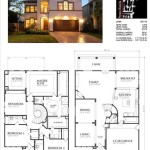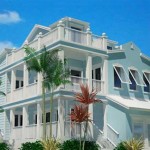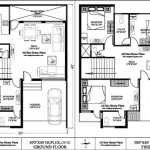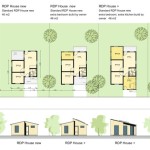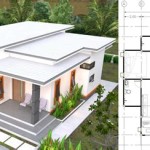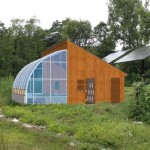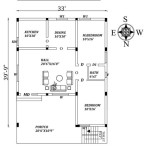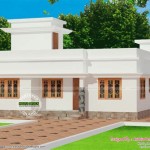3-Story Beach House Plans: Maximizing Coastal Living
Beachfront property presents a unique opportunity for homeowners. The allure of oceanfront views, the sound of waves, and direct access to recreational activities are highly sought after. However, coastal construction also brings forth specific design challenges, particularly when considering multi-story structures. Three-story beach house plans offer a strategic solution, maximizing living space while adhering to local building codes and environmental considerations prevalent in coastal regions. This article will delve into the key aspects of designing and implementing three-story beach house plans, encompassing structural integrity, space utilization, and aesthetic appeal.
A well-designed three-story beach house not only enhances the homeowner's enjoyment of the coastal environment but also increases the property's long-term value. The design process must integrate functionality with aesthetic preferences, ensuring a harmonious blend of indoor and outdoor living. This involves careful consideration of factors such as natural light, ventilation, privacy, and accessibility. Furthermore, adherence to strict building codes and environmental regulations is paramount to ensure the safety and sustainability of the structure.
Structural Considerations for Coastal Environments
One of the primary concerns when designing a three-story beach house is its structural integrity, especially given the harsh conditions often encountered in coastal environments. This includes withstanding strong winds, salt spray, and potential flooding. The selection of appropriate building materials and construction techniques is crucial for ensuring the longevity and safety of the structure. Common materials used include reinforced concrete, pressure-treated lumber, composite decking, and impact-resistant windows and doors.
Wind resistance is a critical factor. Coastal areas are often subject to high winds, particularly during storms and hurricanes. Therefore, the design must incorporate features such as hurricane straps, reinforced roof sheathing, and strategically placed shear walls to resist lateral forces. The shape of the roof also plays a significant role in mitigating wind uplift. Hip roofs, for example, are generally more resistant to wind damage than gable roofs.
Saltwater corrosion poses another significant challenge. Saltwater can accelerate the deterioration of building materials, particularly metals. The use of corrosion-resistant materials and coatings is essential to prevent premature failure. This includes stainless steel fasteners, epoxy coatings for concrete, and specialized paints for exterior surfaces. Regular maintenance and inspection are also crucial for identifying and addressing potential corrosion issues before they escalate.
Flood resistance is another paramount consideration. Coastal areas are prone to flooding, and building codes often require elevating the lowest habitable floor above the base flood elevation (BFE). This can be achieved through various methods, such as raising the entire structure on pilings or constructing the ground floor as a breakaway area. Breakaway areas are designed to collapse under the force of floodwaters, allowing water to flow through the structure and minimizing damage to the upper floors. Proper drainage systems are also critical for managing stormwater runoff and preventing water accumulation around the foundation.
Furthermore, the foundation design must be carefully engineered to accommodate the soil conditions prevalent in coastal areas. Sandy soils can be unstable and prone to erosion. Pile foundations are often used to provide a solid and stable base for the structure, transferring the load to deeper, more stable soil layers. Soil testing and geotechnical analysis are essential for determining the appropriate foundation design and ensuring the long-term stability of the building.
Optimizing Space and Functionality in Three-Story Designs
Three-story beach house plans offer ample opportunities to maximize living space and create functional layouts that cater to various lifestyles. Careful planning is essential to ensure that each level serves a specific purpose and contributes to the overall flow and enjoyment of the home. Considerations should be given to views, natural light, traffic flow, and privacy when designing the layout of each floor.
The ground floor is often used for recreational spaces, storage, and utility areas. In areas prone to flooding, this level may be designed as a breakaway area, with minimal finished space. However, in other cases, the ground floor can incorporate features such as a game room, a home gym, or a covered patio providing shade and shelter from the sun. Access to outdoor showers and foot washing stations is also a common feature on the ground floor, allowing residents to rinse off after a day at the beach.
The second floor typically serves as the main living area, incorporating the kitchen, dining room, and living room. This level often provides the best views of the ocean and is designed to maximize natural light and ventilation. Open-concept designs are popular for creating a spacious and airy feel, while large windows and sliding glass doors provide seamless access to balconies and decks. The integration of indoor and outdoor living spaces is a key element of successful beach house design.
The third floor is usually reserved for bedrooms and bathrooms, providing privacy and quiet for residents. Master suites often occupy the prime locations on this level, offering panoramic views and luxurious amenities such as walk-in closets and spa-like bathrooms. Guest bedrooms and children's rooms can also be incorporated on the third floor, providing ample space for family and visitors. Careful consideration should be given to soundproofing and insulation to minimize noise transmission between floors.
Elevators are often incorporated into three-story beach house plans to provide accessibility for individuals with mobility issues and to facilitate the transport of groceries and luggage. Elevators can be particularly beneficial for older adults or families with young children. Staircases should also be designed with safety and comfort in mind, incorporating features such as handrails, adequate lighting, and non-slip surfaces.
Aesthetic Considerations and Design Elements
The aesthetic design of a three-story beach house should complement the surrounding environment and reflect the homeowner's personal style. Coastal architecture often incorporates elements such as natural materials, light colors, and expansive windows to create a relaxed and inviting atmosphere. The exterior design should be both visually appealing and functional, while the interior design should be comfortable, durable, and easy to maintain.
Exterior design elements often draw inspiration from the surrounding landscape, incorporating natural materials such as wood siding, stone accents, and shingle roofing. Light colors are commonly used to reflect sunlight and keep the house cool, while accents of blue, green, and other coastal hues can add visual interest. Landscaping should be carefully planned to complement the architecture and provide shade and privacy. Native plants are often preferred for their drought tolerance and adaptability to coastal conditions.
Interior design should focus on creating a comfortable and functional living space that is easy to maintain. Durable and easy-to-clean materials are essential, particularly in high-traffic areas such as the kitchen and bathrooms. Light colors and natural textures can create a sense of spaciousness and airiness, while comfortable furniture and cozy accents can add warmth and character. The integration of smart home technology can also enhance the functionality and convenience of the home.
Balconies and decks are integral components of beach house design, providing outdoor living spaces for relaxation, dining, and entertaining. Decks should be constructed from durable and weather-resistant materials such as composite decking or pressure-treated lumber. Railings should be designed to provide safety and security while maintaining unobstructed views. Outdoor furniture should be comfortable, stylish, and resistant to the elements.
Natural light is a key element of beach house design, and large windows and sliding glass doors should be strategically placed to maximize sunlight penetration. Window treatments such as blinds, shades, or curtains can be used to control light and privacy. Skylights can also be incorporated to bring natural light into interior spaces. Ventilation is equally important for maintaining a comfortable indoor environment. Cross-ventilation can be achieved through the strategic placement of windows and doors, while ceiling fans can help circulate air and reduce the need for air conditioning.

Beach House Plan Caribbean Home Floor 3 Story Plans Coastal

3 Story Coastal Style House Plan Tiger Beach Floor Plans

South Florida Design Beach Style 3 Story House Plan

3 Story Coastal Style House Plan Tiger Beach

3 Story Beach Front Modern Style House Plan 8646 Plans How To

Plan 058h 0018 The House

Plan 058h 0023 The House

Beach House Plan Caribbean Home Floor 3 Story

3 Story Beach House Plan Siesta Key Mediterranean Plans

Schooner Bay Coastal House Plans From Home

